HYSTERIA.I. – Visual Archaeology of a Gendered Diagnosis in AI Image Generation
A Representation Study Building on Emotion Precision Methodology
Author: Omar Silwany, Meanwhile In Jupiter
Methodology Adapted From: PJ Pereira & Silverside AI's Emotion Precision Framework
Date: September 2025
Abstract
This study examines demographic representation bias in AI-generated imagery by testing a single emotionally-charged word, "hysteria", across Midjourney versions. Building on Pereira & Silverside AI's framework for emotional precision in AI prompting, we conducted three parallel tests: two with full cinematic parameters (V6 and V7) and one with the isolated word (V7). Across 60 generations, AI consistently produced young, white, thin women (80-100% depending on parameters), with Victorian dress and medical settings appearing unprompted. The word "hysteria," removed from medical diagnosis in 1980, triggered complete visual packages rooted in 19th-century medical misogyny and Hollywood stereotypes. Results indicate AI training data has crystallized both etymological bias (Greek "hystera"/womb) and visual encoding (Victorian literature → Hollywood cinema) into automatic defaults. This archaeological preservation of defunct medical concepts in AI systems has significant implications for creators using these tools. The findings demonstrate that without intentional prompting, AI defaults to historical biases embedded in training data, emphasizing the critical importance of precision and conscious direction in AI-assisted creative work.
Keywords: AI bias, image generation, representation, Midjourney, emotion prompting, visual culture, gender studies
Introduction
When PJ Pereira and Silverside AI demonstrated that precise emotion words create more nuanced performances in AI-generated imagery, they revealed the power of linguistic specificity in prompting. Their work showed how "melancholic" generates different visual results than "sad," establishing a framework for emotional precision in AI creative tools.
This study extends their methodology to examine what happens when we strip away all parameters except the emotion word itself. We selected "hysteria" for its unique position as both a historically gendered medical diagnosis and a word carrying 2,500 years of cultural weight: from Greek "hystera" (womb) to Victorian medical theater to Hollywood's visual language.
Methodology
Research Design
Following PJ Pereira and Silverside AI's framework for testing emotional precision in AI imagery, we conducted three parallel tests to examine how AI interprets and represents a single emotion word across different parameters.
Word Selection: "Hysteria" was chosen for its rich etymological history and cultural weight. As a word that literally means "of the womb" (Greek: hystera) and was used as a gendered medical diagnosis for centuries, it serves as an ideal probe for uncovering encoded biases in AI training data.
Selection Methodology Evolution:
- Tests 1 & 2: Human curation (best of 4) to find strongest emotional performances
- Test 3: No human filter; documented all outputs to reveal pure AI defaults without curator bias
Experimental Evolution: When Hollywood tropes emerged despite professional cinematic parameters in Tests 1 & 2, we designed Test 3 to isolate whether these codes were triggered by filmmaking language or embedded in the word itself. The appearance of even stronger Victorian and Hollywood aesthetics without any prompting confirmed the latter.
Test Parameters
Note on emotion selection: We used "intense hysteria" in Tests 1 and 2 to follow PJ's methodology of pushing for maximum emotional performance. The modifier "intense" ensures the AI generates the most pronounced interpretation of the emotion, making any demographic patterns more visible and documentable.
Note on cinematic prompt: We initially included "cinematic lighting, dramatic mood" to establish production quality standards following PJ's approach. However, when Hollywood tropes emerged even with these professional parameters, we designed Test 3 to isolate the word "hysteria" alone. Remarkably, Hollywood and Victorian tropes appeared even more saliently without any cinematic prompting, suggesting these cultural codes are embedded in the word itself, not introduced by filmmaking language.
Note on style parameter: We used "--style raw" to remove Midjourney's default aesthetic enhancements and beautification filters. This gives more direct access to the model's core interpretation of "hysteria" without the platform's stylistic overlays that might mask or alter demographic patterns.
Note on Midjourney's generation process: Midjourney generates images in grids of 4. For Tests 1 and 2, we selected the strongest emotional performance from each grid. For Test 3, we documented all images to remove human selection bias.
Test 1: Midjourney V6 with Full Prompt
- Prompt:
intense hysteria, close up portrait, cinematic lighting, dramatic mood --ar 16:9 --style raw --v 6 - Images generated: 80 (20 grids of 4)
- Images documented: 20 (best from each grid)
- Selection method: Human curation: strongest emotional performance per grid
- Human filter: Yes - curator bias acknowledged
Test 2: Midjourney V7 with Full Prompt
- Prompt:
intense hysteria, close up portrait, cinematic lighting, dramatic mood --ar 16:9 --style raw --v 7 - Images generated: 80 (20 grids of 4)
- Images documented: 20 (best from each grid)
- Selection method: Human curation: strongest emotional performance per grid
- Human filter: Yes - curator bias acknowledged
Test 3: Midjourney V7 Pure Word Test
- Prompt:
hysteria - Images generated: 20 (5 grids of 4)
- Images documented: 20 (all images)
- Selection method: None: all outputs documented
- Human filter: None: pure AI defaults revealed
- Note: No style, composition, or demographic instructions provided
Methodological Note: All tests were conducted using an unpersonalized Midjourney account without profile customization or project moodboards. This ensures results reflect Midjourney's base training defaults rather than personalized algorithmic adjustments. The patterns documented represent the core cultural encodings in the training data, not user-specific adaptations.
Results
Quantitative Findings
Version 6 Results (Full Prompt)
- Gender: 100% Female (20/20)
- Race: 95% White (19/20)
- Age: 100% Young (teens to early 30s)
- Body Type: 100% Thin/conventionally attractive
- Common elements: Rain, sweat, tears, Victorian "waif" aesthetic
Version 7 Results (Full Prompt)
- Gender: 90% Female (18/20)
- Race: 95% White (19/20)
- Age: 100% Young
- Body Type: 100% Thin
- Common elements: Similar Victorian/Hollywood tropes but slightly more varied compositions
Version 7 Pure Word Test
- Gender: 93% Female (13/14 human forms)
- Race: 93% White (13/14 human forms)
- Age: 100% Young
- Body Type: 100% Thin
- Note: 6 images showed no human forms but still displayed Victorian medical aesthetics and text
Statistical Summary
Combined Results (All 60 Images)
- Female representation: 90% (54/60)
- White representation: 93% (56/60)
- Young (under 35): 100% (60/60)
- Thin/conventional body type: 100% (60/60)
Note: See Appendix below for complete image-by-image documentation across all three test conditions.
Qualitative Observations
Key Images

Figure 1: Victorian dress, wallpaper, and room appeared from the single word "hysteria" with no historical prompting (Test 3, Image #6)

Figure 2: Marilyn Monroe aesthetic emerged unprompted, showing Hollywood's encoding of "troubled femininity" (Test 3, Image #12)

Figure 3: Synthesis image – Victorian dress surrounded by modern tabloid magazines, merging medical and media hysteria (Test 3, Image #19)

Figure 4: The universal scream – hands to temples gesture that appeared across all test conditions (Test 3, Image #20)
Patterns Identified
- Historical Encoding: The word "hysteria" triggered period-specific imagery (Victorian era) without any temporal prompting
- Gender-Specific Expression:
- Females: Internal distress, no external cause needed
- Males (rare): Only appeared with visible external threats or aggressive expressions
- Cultural Archetypes:
- Victorian "hysterical woman"
- Hollywood "troubled starlet"
- Horror movie "final girl"
- Medical patient/subject
- Visual Clichés:
- Hands to temples
- Mouth open in scream
- Upward gaze
- Tears/sweat/rain
- Behind glass/confined spaces
- Absent Interpretations: Despite "hysteria" having multiple contemporary meanings, the AI never generated:
- Mass hysteria (crowd panic, collective behavior)
- Sports fan hysteria (excitement, celebration)
- Hysterical laughter (comedy, hilarity)
- The algorithm exclusively chose the gendered medical/emotional distress interpretation, ignoring all other valid uses of the word.
- Demographic Hierarchy: When generating "hysteria," AI's decision tree follows this pattern:
- FIRST: Gender (Female 90% of time)
- SECOND: Age (Young 100% of time)
- THIRD: Race (White 93% of time)
- FOURTH: Body type (Thin 100% of time)
- LAST: Type of emotional expression
Discussion
Etymology & Cultural Encoding
Word Origin: From Greek "hystera" meaning "uterus"
Medical History:
- Used as medical diagnosis for 2,500+ years
- Believed to be caused by "wandering womb"
- Removed from DSM in 1980
- Treatment included "pelvic massage" and institutionalization
Cultural Evolution & Visual Encoding: The cultural archaeology of "hysteria" is twofold:
- Etymological roots: From Greek medical texts defining it as inherently female
- Visual encoding: Victorian literature established the aesthetic (corsets, fainting, confinement), then Hollywood cinema crystallized it into pervasive tropes (the madwoman, the troubled starlet, the screaming victim)
Training Data Reality: Midjourney appears to have been trained heavily on Hollywood's visual language, absorbing decades of cinematic clichés. These tropes are so deeply embedded that the word alone triggers complete mise-en-scène: costume, lighting, setting, and casting.
Selective Interpretation: Notably, the AI never visualized other valid meanings of "hysteria" such as mass hysteria (crowd behavior), sports fan hysteria (celebration), or hysterical laughter (comedy). This selective interpretation reveals how thoroughly the gendered medical meaning dominates the training data, overriding all contemporary uses of the word.
Implications for AI-Assisted Creation
This reveals why precision in prompting (as PJ Pereira and Silverside AI demonstrated) is crucial. Without intentional direction, AI defaults to Hollywood's most worn paths. Creators must "keep their hands on the wheel" to steer away from visual clichés toward authentic representation.
The findings have significant implications for:
- Filmmakers: Every word carries visual history that may override creative intent
- Designers: Default representations perpetuate historical biases
- Educators: AI tools require critical media literacy
- Developers: Training data curation directly impacts representational justice
Conclusions
- AI perfectly preserved a defunct medical diagnosis: Despite being removed from psychiatric practice in 1980, "hysteria" triggers consistent visual representations rooted in Victorian medical misogyny
- Selective interpretation of meaning: The AI exclusively chose the gendered medical/emotional interpretation of "hysteria", never visualizing mass hysteria, sports fan hysteria, or hysterical laughter. This reveals which cultural encoding dominates the training data
- Dual cultural encoding: The bias operates on two levels – etymological (Greek "womb") and visual (Victorian literature → Hollywood cinema). AI training data crystallized both into automatic defaults
- Hollywood's database dominates: Midjourney's training appears heavily weighted toward cinematic imagery, making every prompt potentially a summoning of film history's most persistent clichés
- Words carry archaeological layers: The single word "hysteria" summoned complete visual packages including era, setting, demographics, and emotional expression without any additional prompting
- The algorithm doesn't create, it remembers: AI image generation reveals itself as cultural archaeology, excavating and reproducing historical biases embedded in training data
- Creative implications: As PJ Pereira and Silverside AI proved, precision in prompting is essential. Without intentional steering, AI follows the grooves worn deepest in our visual culture. Creators must maintain conscious control to achieve authentic representation.
Animation and Video Production
Animation Platform: Midjourney's native video generation
Settings Used: Auto + Low Motion, Auto + High Motion, Loop + Low Motion (depending on image content)
Video Assembly: Adobe Premiere 2025
Audio: "Polymetric Juggling" by DivKid
Replicability
This experiment can be replicated across multiple platforms to test for consistency of bias:
Google Ecosystem:
- Gemini Flash 2.5 for still generation
- Google Veo for animation
- Google Flow for assembly
Independent Platforms:
- Kling AI 1.6 (noted for superior emotion capture)
- Runway Gen-4 (professional video generation)
- Stable Diffusion (open-source alternative)
- DALL-E 3 (OpenAI's implementation)
Each platform's training data may reveal different cultural encodings of the same word, making cross-platform testing valuable for understanding the scope of embedded bias.
Acknowledgments
This study builds directly on the methodological framework developed by PJ Pereira and Silverside AI for testing emotional precision in AI image generation. Their pioneering work on linguistic nuance in prompting made this representation analysis possible. We are grateful for their contributions to understanding how language shapes AI-generated imagery.
Practical Application
For AI filmmakers and creators: This experiment demonstrates why PJ's precision in prompting is essential. Every word carries both etymological and visual history. Without conscious direction, AI defaults to Hollywood's most worn paths. The solution isn't to avoid loaded words but to prompt with intentionality, steering toward authentic rather than archetypal representation.
Keep your hands on the wheel. 🤘🏽
References
Pereira, P. & Silverside AI. (2025). Emotion Precision in AI Image Generation. https://www.linkedin.com/posts/pjpereira_ai-acting-storytelling-activity-7375918690262892544-6rMH?utm_source=share&utm_medium=member_desktop&rcm=ACoAAACBHZcBNUM64Oyxygjg_rdTHtQJF4bVJXY
American Psychiatric Association. (1980). Diagnostic and Statistical Manual of Mental Disorders (3rd ed.).
Clinical Practice & Epidemiology in Mental Health (PMC): "The concept of hysterical neurosis is deleted with the 1980 DSM‑III," with context on the reclassification under dissociative presentations.
Meanwhile In Jupiter. (2025). HYSTERIA.I. https://vimeo.com/1121662292?share=copy#t=0. Available at: https://www.linkedin.com/feed/update/urn:li:activity:7376725540021637121
About Meanwhile In Jupiter
Meanwhile In Jupiter brings big-agency craft to the intersection of creativity and AI technology. Born from two decades on Madison Avenue and based in coastal Florida, we help ambitious brands navigate the new creative landscape through campaigns, actions, and films.
The HYSTERIA.I. study exemplifies our approach: understanding how language actually works in AI tools so creators can maintain intentional control. By revealing the hidden mechanics connecting words to visual output, we enable more precise creative direction in the AI era.
We don't just identify patterns — we map the territory. When creators understand these linguistic mechanics, they can keep their hands on the wheel.
Contact: Omar Silwany
Company: Meanwhile In Jupiter
Date: September 2025
Appendix A: Complete Image-by-Image Documentation
Test 1: Midjourney V6 with Full Prompt (20 images)
Prompt: intense hysteria, close up portrait, cinematic lighting, dramatic mood --ar 16:9 --style raw --v 6
Selection Method: Human curation - strongest emotional performance per grid
Demographics Summary
- 20/20 Female (100%)
- 19/20 White (95%)
- 20/20 Young - late teens to early 30s (100%)
- 20/20 Thin/conventionally attractive (100%)
Visual Characteristics
- Heavy Victorian "waif" aesthetic throughout
- Excessive use of environmental elements (rain, sweat, tears)
- Theatrical distress expressions without external cause
- Consistent horror/melodrama cinematography


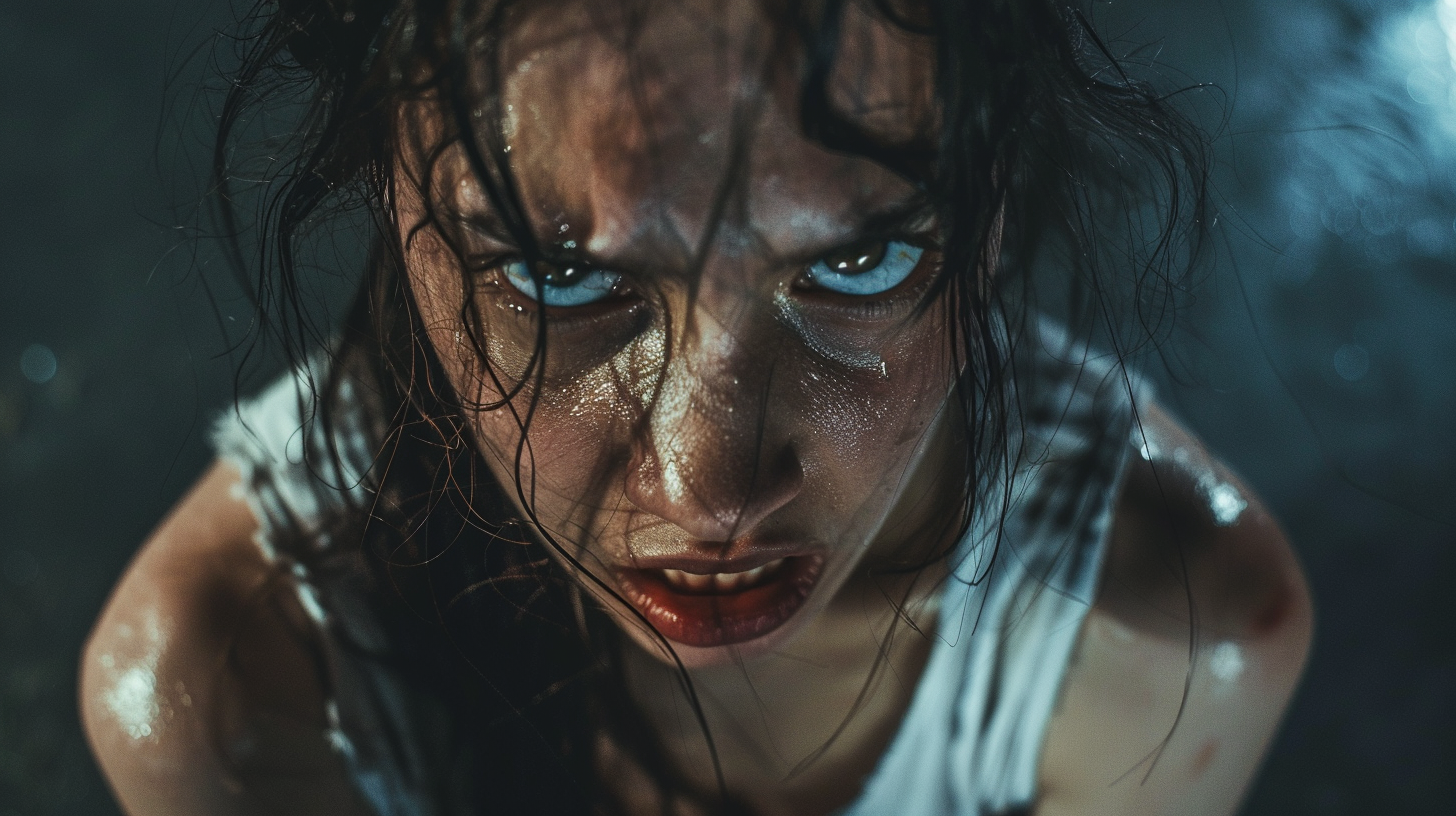

















Test 2: Midjourney V7 with Full Prompt (20 images)
Prompt: intense hysteria, close up portrait, cinematic lighting, dramatic mood --ar 16:9 --style raw --v 7
Selection Method: Human curation - strongest emotional performance per grid
Image-by-Image Breakdown
- Images 1-12: Female (white, young, various distress expressions)
- Image 13: Male (young, white, sweaty, intense/aggressive expression)
- Image 14: Male (young, white, intense/aggressive expression)
- Images 15-20: Female (white, young, one possibly Latina)
Demographics Summary
- 18/20 Female (90%)
- 2/20 Male (10%)
- 19/20 White (95%)
- 20/20 Young - teens to early 30s (100%)
- 20/20 Thin (100%)
Key Observations
- Males only appeared with aggressive/external expressions
- Females showed internal distress/vulnerability
- Improved cinematography but identical demographic patterns
- Extreme cropping in later images for emotional intensity





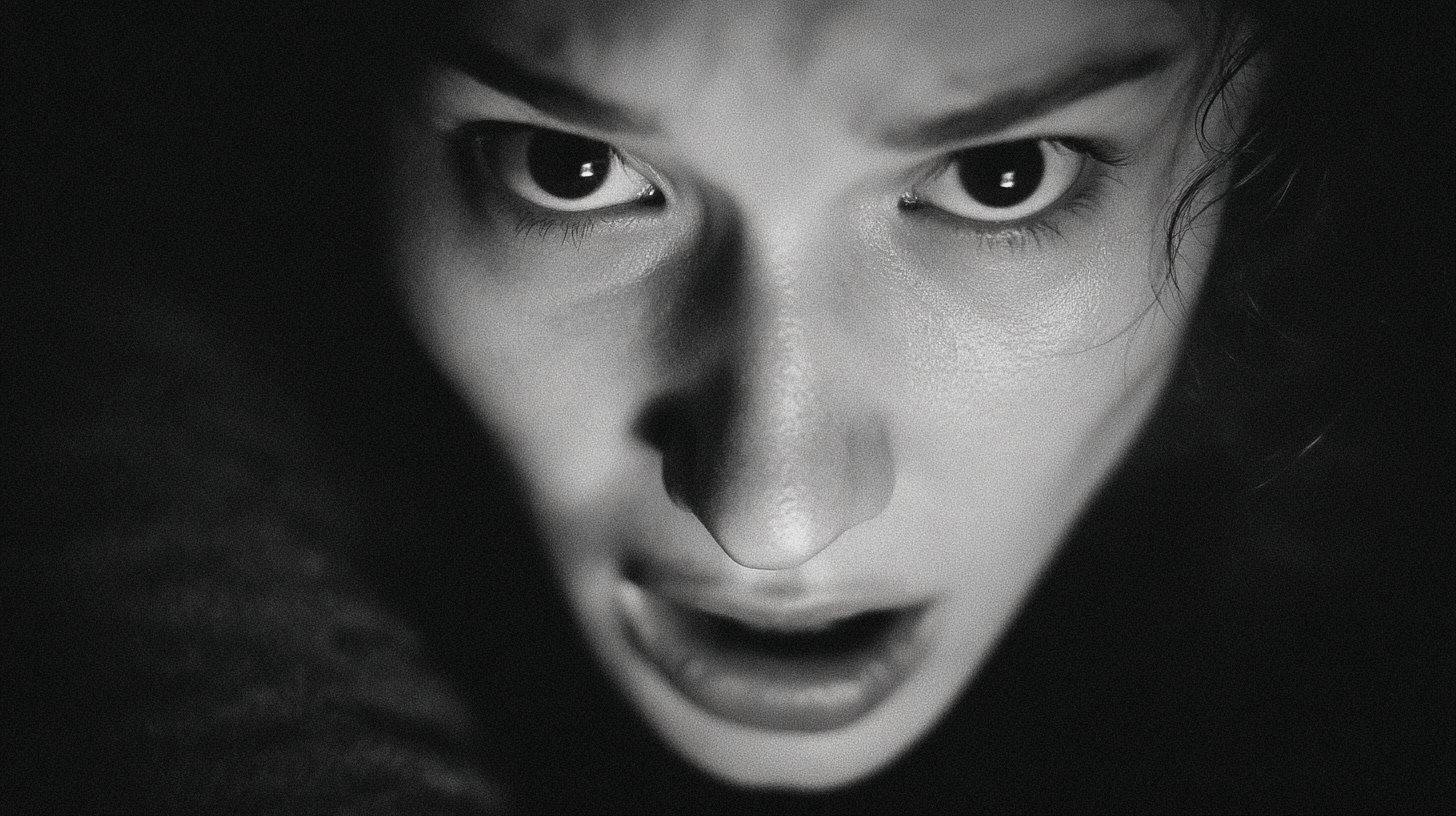


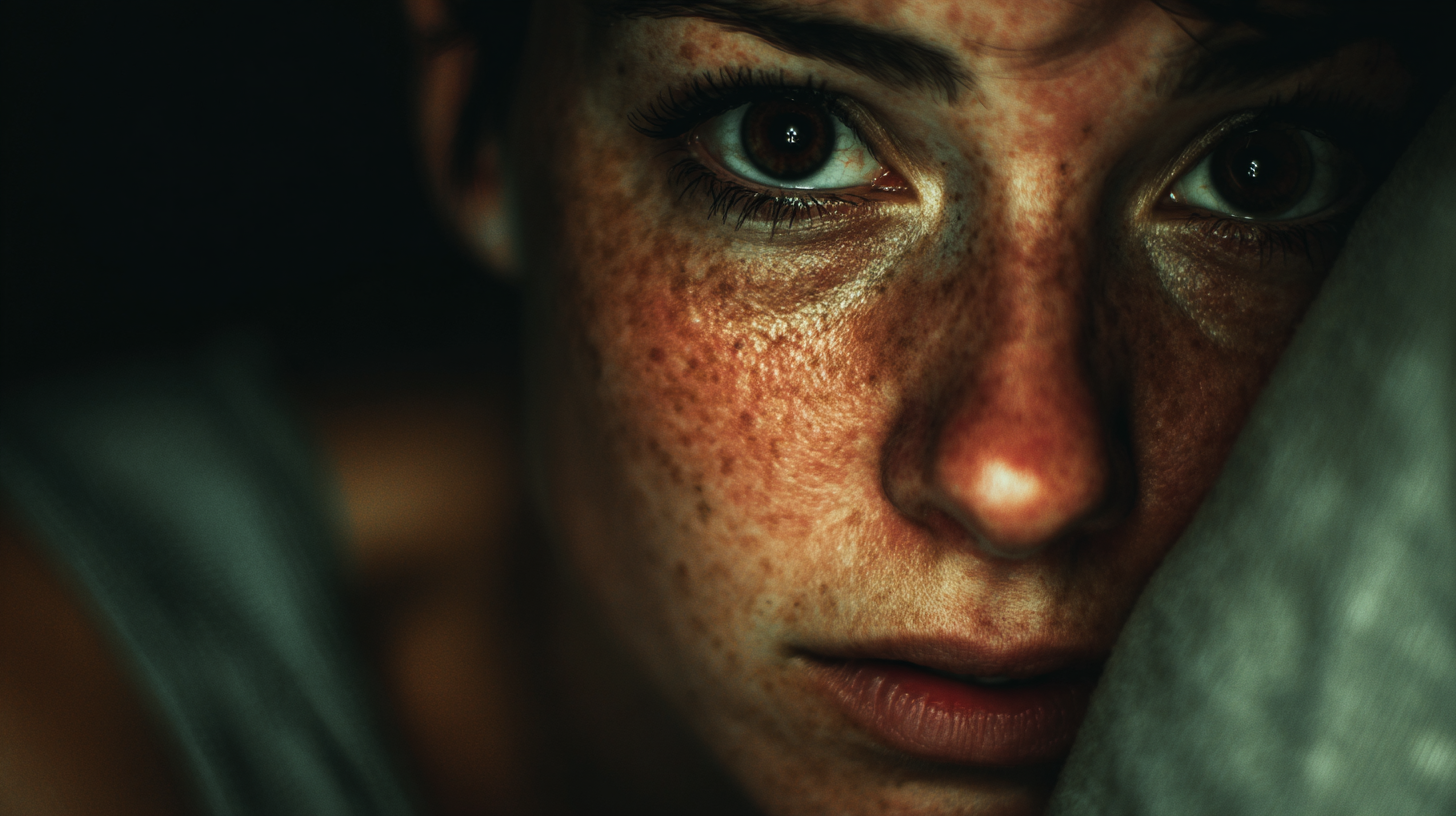


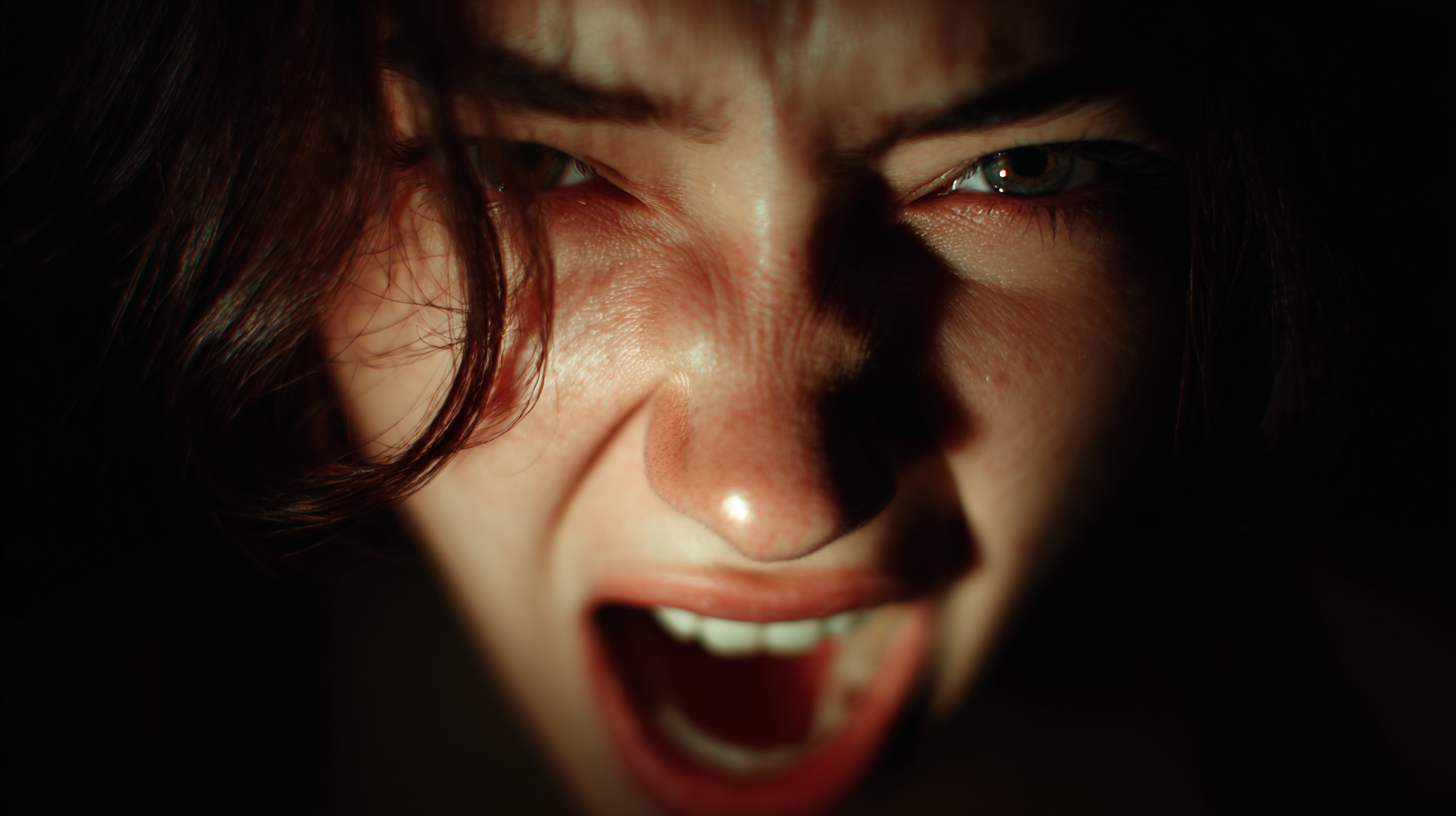








Test 3: Pure Word Test - V7 with "hysteria" only (20 images)
Prompt: hysteria (no additional parameters)
Selection Method: All outputs documented (no human selection)
Complete Image List:
- Image 1: Young white female - screaming, dark/wild hair, horror aesthetic
- Image 2: Young white female - looking upward (salvation/pleading gaze)
- Image 3: Young white female - hands to head, brown hair, anguish expression
- Image 4: Young white female - hands framing face, bewildered expression
- Image 5: Young white female - looking down, dissociative state
- Image 6: Young white female in VICTORIAN DRESS - complete Victorian room with period wallpaper
- Image 7: Young white female - possibly Victorian dress, intense expression
- Image 8: Young white female - behind glass with water droplets, sci-fi horror aesthetic
- Image 9: Young white female - nurse uniform, medical professional having hysteria
- Image 10: Young white female - shock/surprise expression (could be fear or delight)
- Image 11: Young white female - screaming into dark void
- Image 12: GROUP - woman centered between two screaming males
- Image 13: AMBIGUOUS - masked figure, metallic/reflective mask, horror poster aesthetic
- Image 14: MALE - young white, appears with external threat/violence context
- Image 15: Young white female in VICTORIAN DRESS - hands to temples, classic hysteria pose
- Image 16: Young white female - B&W extreme close-up, tight portrait cropping
- Image 17: Teenage MALE - covering ears, defensive posture, sensory overload
- Image 18: Young white female - red horror lighting, screaming
- Image 19: Young white female in VICTORIAN DRESS - surrounded by swirling tabloid magazines
- Image 20: Young white female - hands to temples, universal scream gesture












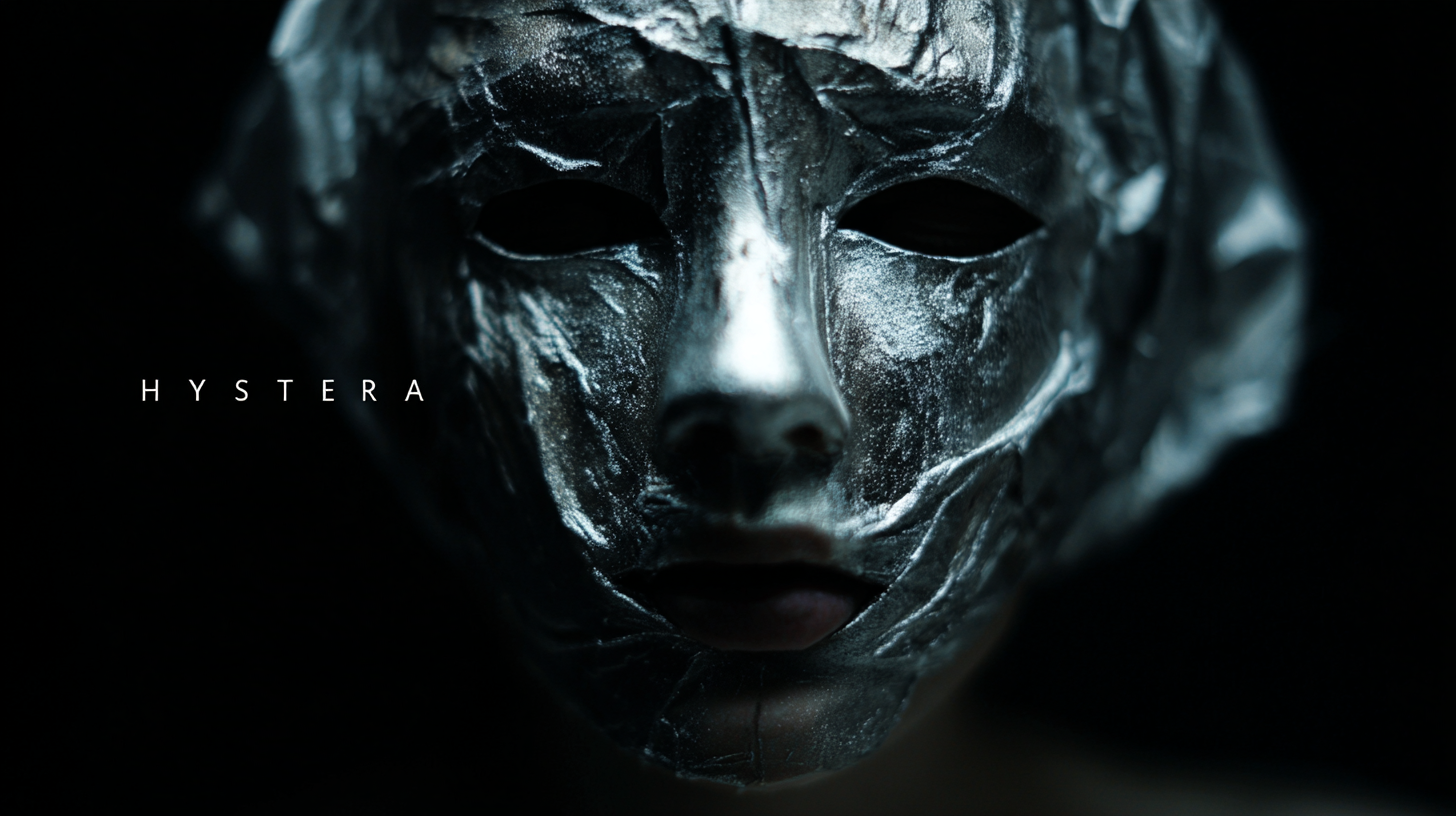






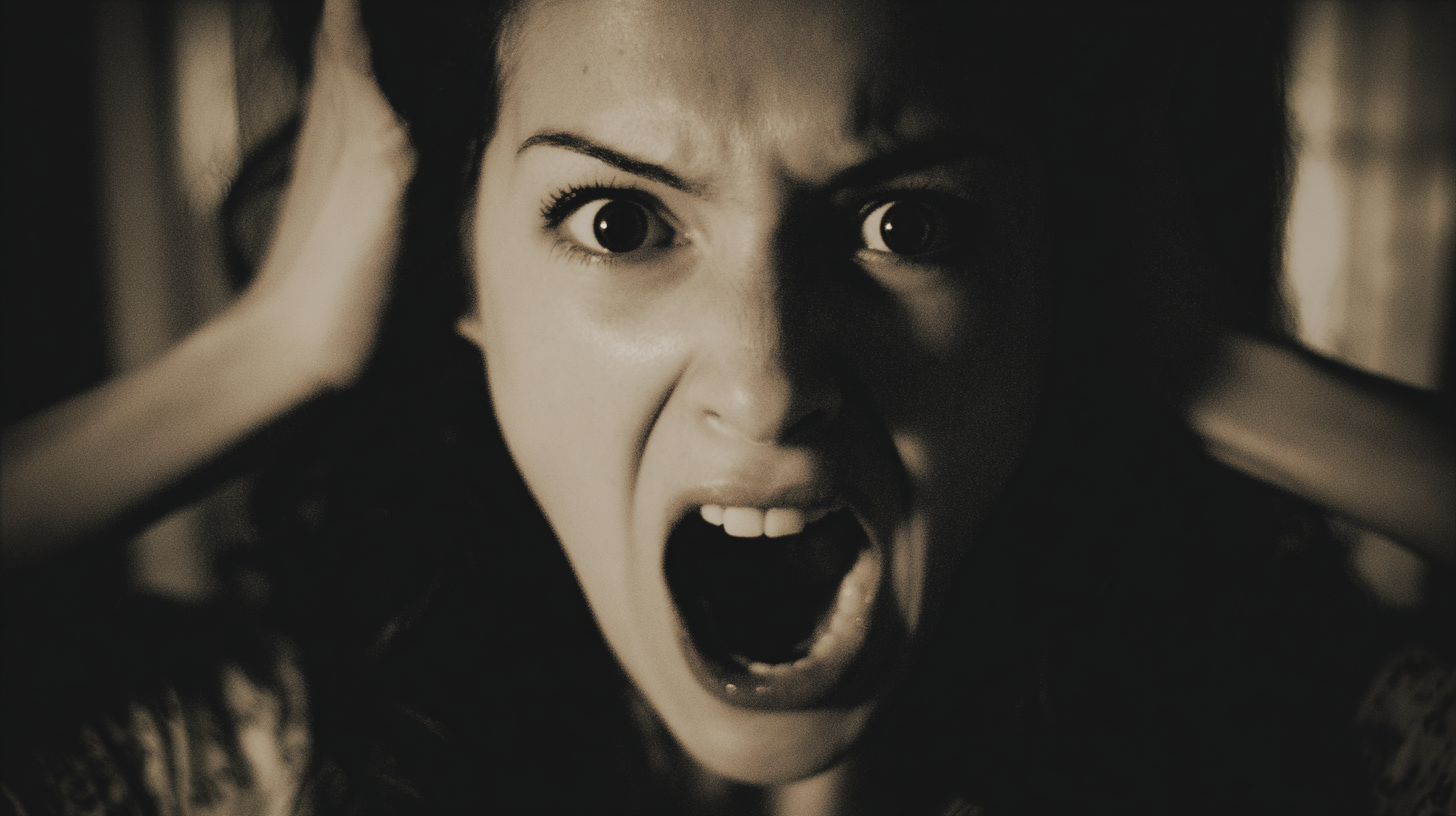
Demographics Summary
- 16/20 Female (80%)
- 2/20 Male (10%)
- 1/20 Group (5%)
- 1/20 Ambiguous (5%)
- 18/20 White (90%)
- 20/20 Young (100%)
- 20/20 Thin (100%)
Critical Findings
- Victorian dress appeared 3 times WITHOUT historical prompting
- Medical/institutional settings emerged unprompted
- Marilyn Monroe aesthetic materialized
- Males only appeared with external threats or defensive postures
- Zero representations of mass hysteria, sports hysteria, or hysterical laughter
Statistical Comparison Across All Tests
| Demographic | Test 1 (V6) | Test 2 (V7) | Test 3 (Pure) | Combined |
|---|---|---|---|---|
| Female | 100% | 90% | 80% | 90% |
| Male | 0% | 10% | 10% | 7% |
| Other | 0% | 0% | 10% | 3% |
| White | 95% | 95% | 90% | 93% |
| Young | 100% | 100% | 100% | 100% |
| Thin | 100% | 100% | 100% | 100% |
Pattern Analysis
The complete documentation reveals that across 60 generations:
- The word "hysteria" alone triggered complete visual packages including era, setting, demographics, and emotional expression without any additional prompting
- Gender determined expression type: Males (when they appeared) showed aggressive/defensive postures, never the vulnerable internal distress allowed for females
- Victorian medical coding persisted even with technological advancement from V6 to V7
- Hollywood's visual language dominated, with horror movie and period drama aesthetics appearing consistently
- The algorithm chose exclusively the gendered medical interpretation of hysteria, ignoring all contemporary uses of the word
← Back to AI Lab

